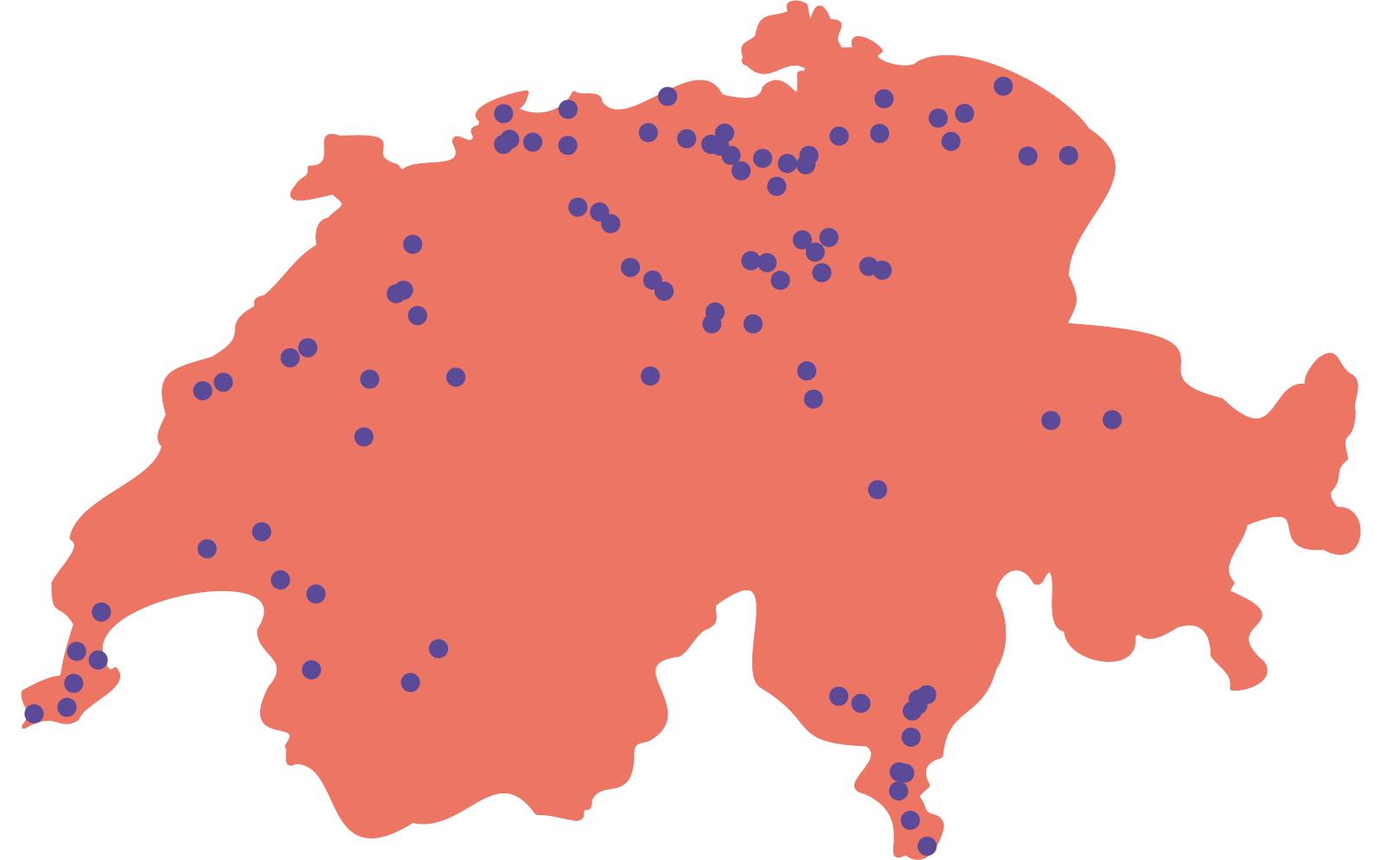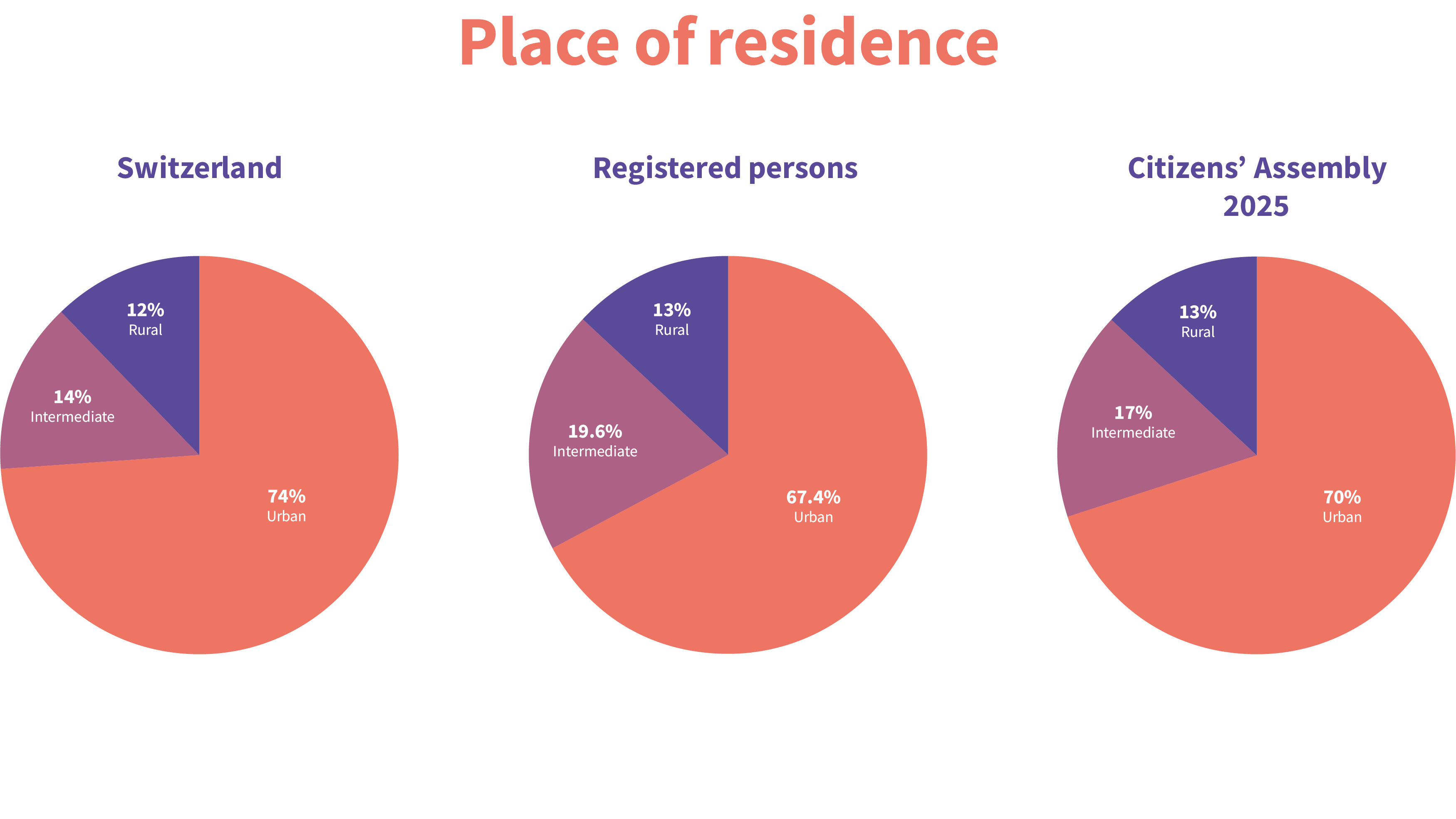A reflection of the Swiss population that is as diverse as possible
From November, 100 people from all over Switzerland will discuss the issue of rising healthcare costs in the Citizens‘ Assembly. The 100 people are now known. But how is the Citizens’ Assembly composed?

The Citizens' Assembly should reflect the diversity of the Swiss population as closely as possible. So, electricians will sit next to kindergarten teachers and pensioners next to young people. To achieve this diversity, the participants were selected at random.
Random selection
In a first step, around 22,000 people over the age of 16 and regardless of their nationality were drawn from the sample frame of the Federal Statistical Office. These people were invited to participate in the Citizens' Assembly by letter. Those interested in participating could register for the second random selection. To do so, they provided information about their age, education and political views. A total of 2,004 people registered to participate in the Citizens' Assembly. On the basis of this information, 100 people were selected at random on June 25, 2024 at the Polit-Forum Bern to participate in the Citizens' Assembly.
Composition of the Citizens' Assembly 2025
The following figures show the composition of the Citizens' Assembly 2025 compared to the Swiss resident population and compared to the 2,004 people who registered to participate in the Citizens' Assembly.
While a majority of the people who registered for the Citizens' Assembly were male, this bias was offset by the second lottery procedure (The data comes from the Federal Statistical Office and is based on the binary gender ratio in Swiss law).
In the Citizens' Assembly, the age category “25-39 years” is slightly less well represented than in the population as a whole, and the age category “40-64 years” is slightly more well represented.
Based on previous experiences of recruitment procedures for citizens' assemblies, the criterion “education” is particularly challenging when it comes to achieving a balanced distribution. Not only do people without post-compulsory education participate less frequently in elections and referendums, but they are also significantly harder to recruit for more intensive forms of participation. Conversely, people with a higher level of education are more willing than average to participate in citizens' assemblies. The second random selection process largely compensated for this distortion. However, there is still a slight underrepresentation of people without post-compulsory education in the Citizens' Assembly.
The two-stage random selection process is used in Citizens' Assemblies to achieve as accurate a representation as possible of the population as a whole (descriptive representation). However, this does not guarantee that a wide variety of different opinions and perspectives are represented in a citizens' assembly. For this reason, a category for political attitudes was also considered for the citizens' assembly. The aim for the distribution in the citizens' assembly was to achieve the most even distribution of different political attitudes possible.
The category 'voting frequency' was used to record how regularly registered people take part in elections and votes. This category makes it possible to specifically include the views and perspectives of those who would otherwise not participate or participate less in established forms of participation.
Similar to the education category, it is difficult to achieve a distribution that is as similar as possible to that in the population. This can be seen from the distribution among the registered participants, where those who often or always participate in elections and referendums are over-represented compared to those who rarely or never participate. The second random selection process largely compensated for this distortion. However, there is still a slight underrepresentation of people who rarely participate in politics in the Citizens' Assembly.
Another category records whether the persons in the Citizens' Assembly live in an urban, intermediate or rural area. And the last category records the region of Switzerland in which the members of the Citizens' Assembly live. Here, too, care was taken to ensure that all regions were represented as equally as possible in the Citizens' Assembly, which leads to a slight overrepresentation of Central Switzerland and Ticino in the Citizens' Assembly.
Overall, it can be seen that the two-stage lottery procedure in the Citizens' Assembly was able to achieve an extremely diverse representation of the Swiss population. This enables the Citizens' Assembly to reflect the diversity of opinion and the different experiences of the Swiss population.
The Citizens' Assembly format promotes respectful exchange between people with different opinions in order to create mutual understanding and find common solutions. According to the recently published diversity study by the Gottlieb Duttweiler Institute, the Swiss population mainly surrounds itself with like-minded people.
The Citizens' Assembly will meet for the first time on the weekend of November 16–17 at the University of Zurich and discuss "rising healthcare costs".
Sources for population figures::
- Age und gender: https://www.bfs.admin.ch/bfs/de/home/statistiken/kataloge-datenbanken.assetdetail.26565301.html
- Education: https://www.bfs.admin.ch/bfs/de/home/statistiken/bildung-wissenschaft/bildungsstand.assetdetail.30148618.html
- Political orientation: https://www.bfs.admin.ch/bfs/de/home/statistiken/wirtschaftliche-soziale-situation-bevoelkerung/soziale-situation-wohlbefinden-und-armut/subjektives-wohlbefinden-und-lebensbedingungen/politik.assetdetail.30526475.html
- Political participation: https://onlinelibrary.wiley.com/doi/full/10.1111/spsr.12178
- Spatial distribution: https://www.atlas.bfs.admin.ch/maps/13/de/17223_12361_3191_227/26733.html
- Regional distribution: https://www.bfs.admin.ch/bfs/de/home/statistiken/bevoelkerung/stand-entwicklung.assetdetail.27965833.html
Andri Heimann & Loïc Schwab






